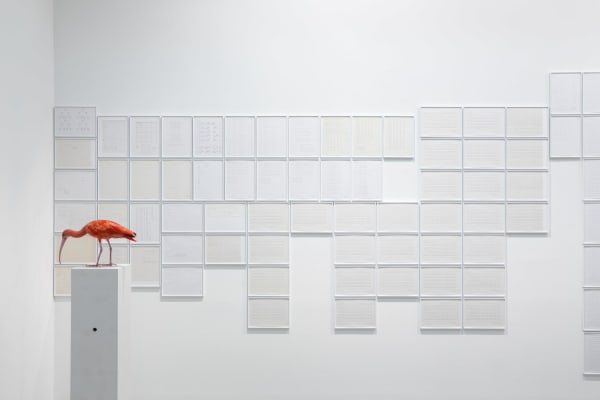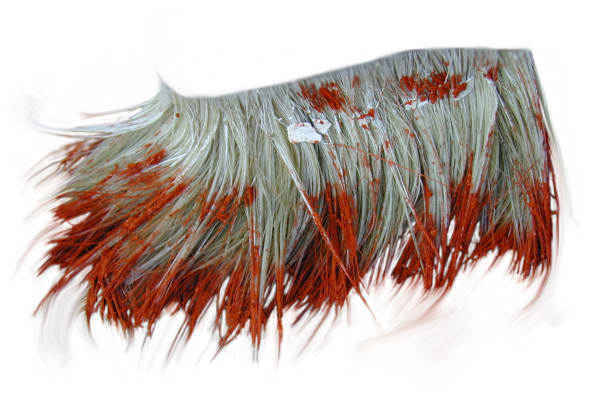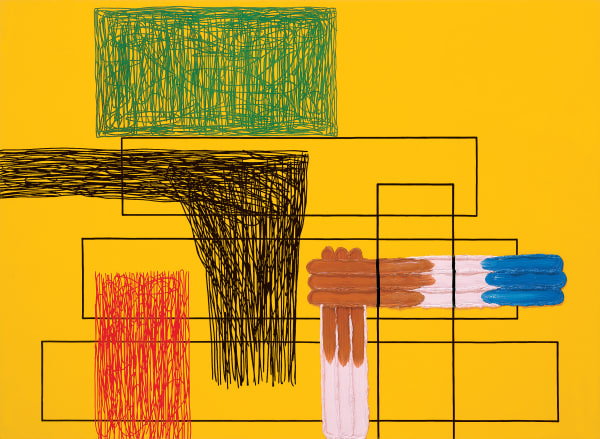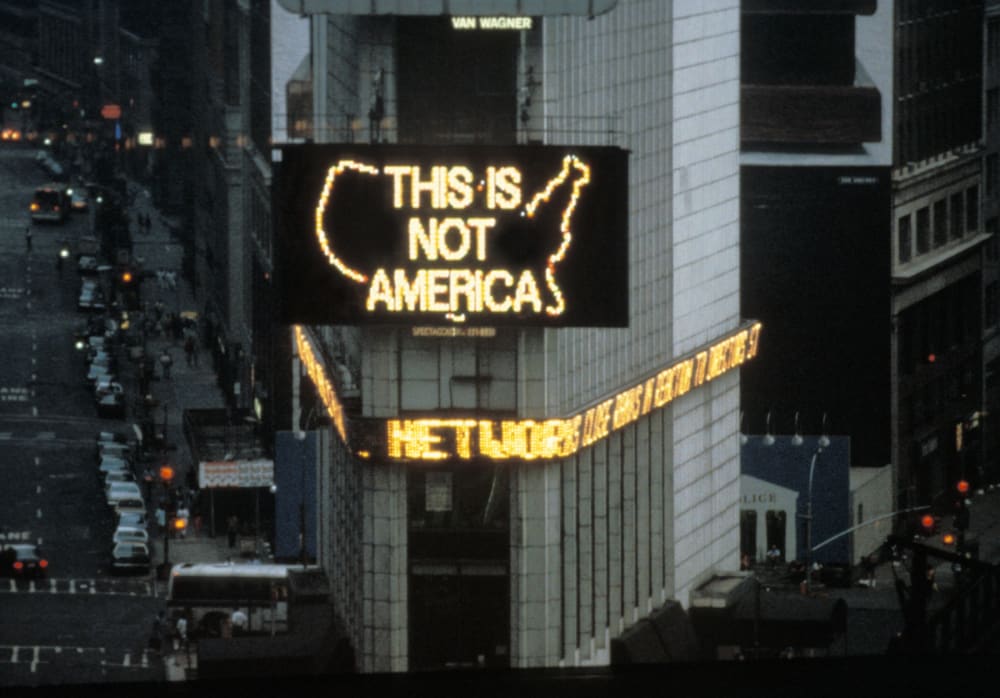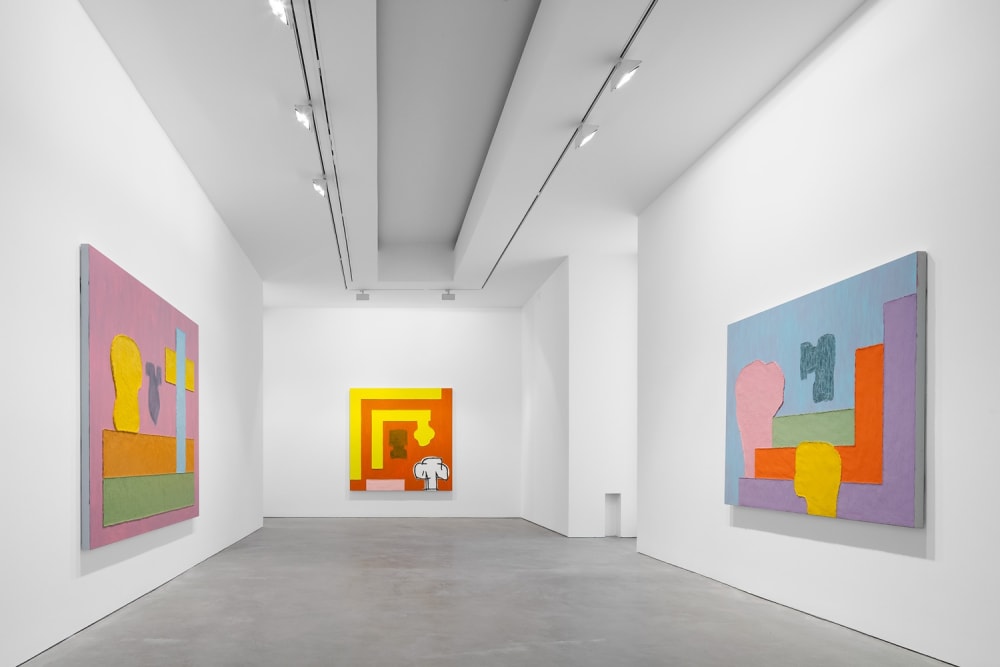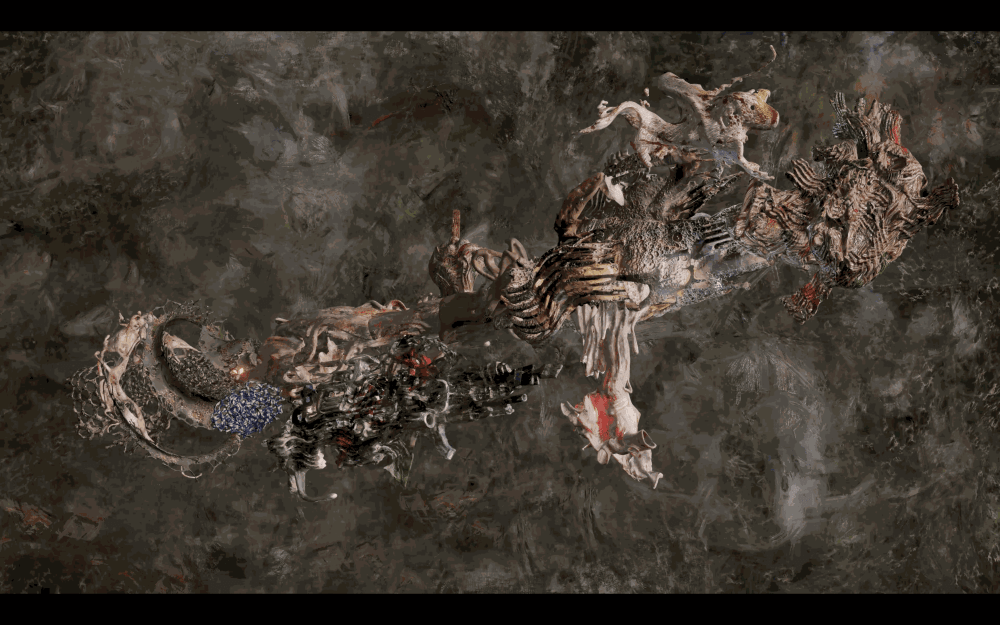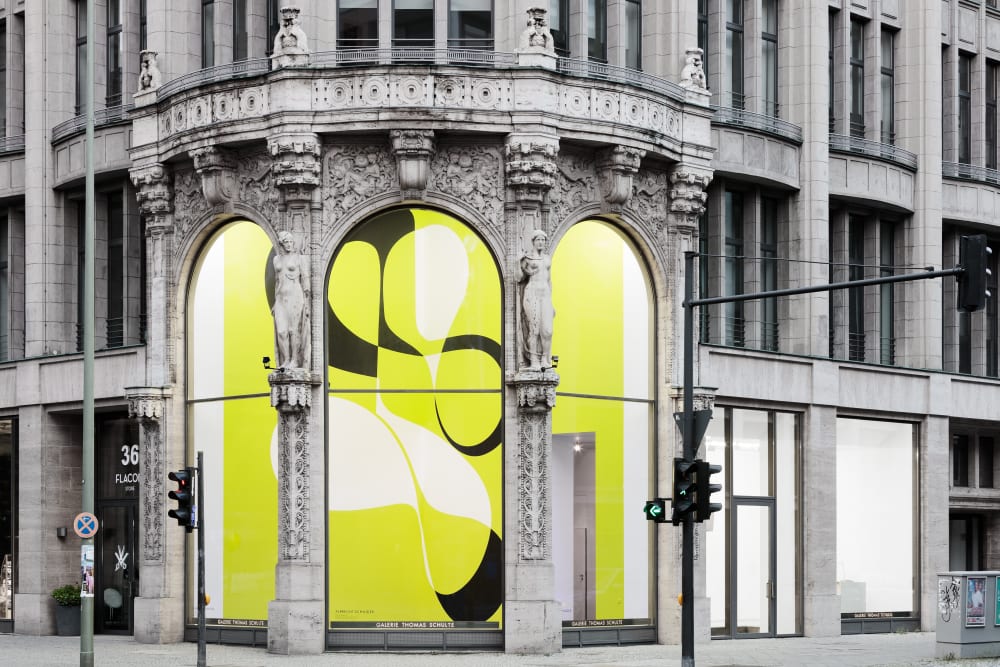Teach us to outgrow our madness: GROUP SHOW
-
Introduction
On Friday the 21st of November, 2014, Galerie Thomas Schulte opens the group exhibition Teach Us To Outgrow Our Madness, including works by Danilo Dueñas, Alfredo Jaar, Jonathan Lasker, Iñigo Manglano-Ovalle, Fabian Marcaccio, Michael Müller, David Reed, Leunora Salihu, Albrecht Schnider, and a wall drawing by Stephen Willats in the Corner Space.
Teach Us To Outgrow Our Madness gathers ten artists of the gallery’s program and thematically focuses on Drawing, Writing, and Gesture. K4, the system of character codes that Michael Müller (b. 1970) has developed over the past 25 years is positioned beside the eponymous neon sign by Alfredo Jaar (b. 1956), executed in the artist’s handwriting and thus a self-reference as a sketch to the actual work. The Paintant Lab by argentine artist Fabian Marcaccio (b. 1963), displayed in two large showcases, presents filigree, 3D printed silicon sculptures along with drawings and digital prints. These renderings of his painterly gestures reveal themselves equally as the vocabulary of the artist as well as the archive, to which he helps himself in creating his works. The conceptual analysis of his own artistic form language is at the centre of the abstractions of Jonathan Lasker (b. 1948); something that he performs in a particularly fastidious way in his painting Explanation of Ice to a Summer Insect. David Reed (b. 1946) focuses primarily on the pure painterly gesture. In his elongated, landscapeformat canvas #639, with its dynamically drawn, broad curves and loops he demonstrates his sense for color and form. With methodic precision and only seemingly spontaneous, Reed sometimes works several years on such abstractions, which are meticulously planned and implemented. Also, for Albrecht Schnider (b. 1958), preparatory studies in form of countless unconsciously made drawings are at the base his paintings and sculptures (Ohne Titel, 2014). When transferring the composition from one medium to the other, he rids the image of any individual handwriting and comprises movement into solid shapes. Shapes are also that, which Danilo Dueñas (b. 1956) is interested in when examining found objects and materials such as books, wardrobes, doors, or wood. The resulting works on paper and wood allow the color and the relic, removed from its original context, to emerge in a new language of form. Iñigo Manglano-Ovalle (b. 1961) demonstrates how Constantin Brancusi’s 1923 sculpture, Bird in Space, can undergo a contemporary as well as highly intelligent interpretation. He subjects one of the most important sculptural works of classical modernism to 10 times the speed of sound in a wind tunnel. The result, which was recorded with the help of so-called Schlieren photography and reproduced in aluminum, is turned upside down and is displayed in the exhibition as a new transformation in carbon. The sculptor Leunora Salihu (b. 1977) develops impressive bodies of space, which seem to be filled by association and appear to be familiar transformations of organic and technological forms. The selected drawings, which depict struts, waves, and arches, are the medium between vision and sculptural implementation.
As a template for his wall drawing in the Corner Space of the gallery, Stephen Willats (b. 1943), who is included in a number of exhibitions in Berlin this winter, uses the drawing Strange Attractor No. 28. As is customary for the conceptual artist, the work is comprised of arrows and geometric shapes, dealing with information processing and social interaction. In its location, the mural provides a mirror image and an activation of the audience rushing by on one of Berlin’s busiest intersections.
-
Installation Views
-
Works
-
Inquire about works in teach us how to outgrow our madness

-
Artists on view




